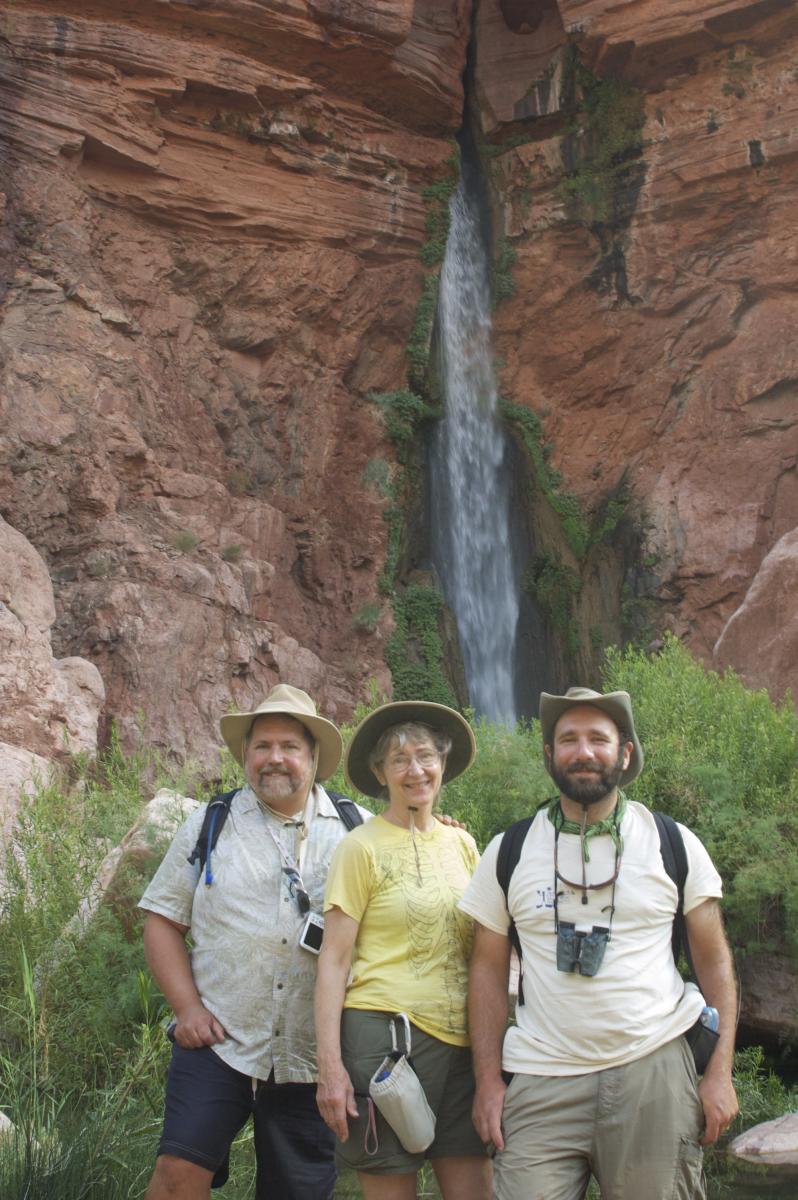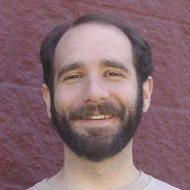This year, for the first time, NCSE will be providing all-expenses-paid seats on our annual Grand Canyon raft trip to two teachers. We had 140 applications, which my colleagues and I carefully sorted and sifted through before we selected Scott Hatfield and Alyson Miller as the winners. They impressed us with not only their exceptional work in the classroom, but also their deep commitment to protecting the place of evolution and climate change in all classrooms. We're eager to explore the Grand Canyon with them.
We asked the applicants to share their ideas of what they might take away from the eight-day trip, and bring back to their classrooms. You can see Miller and Hatfield’s responses in their guest blog posts (Facing Challenges in the Classroom: Scott Hatfield, From the Canyon to the Classroom: Scott Hatfield, Facing Challenges in the Classroom: Alyson Miller, and From the Canyon to the Classroom: Alyson Miller).
I doubt anyone can anticipate what they'll learn from the Canyon. The Canyon is too big to imagine, and you can’t prepare for the sights and experiences within those red walls. I say that from first hand experience, based on my first trip to the Canyon. It's a story I shared in the NCSE newsletter two years ago, and which I’ve included below. I can’t wait to share this exhilarating voyage of discovery with this year’s scholarship winners (and the NCSE supporters who paid for their own seats on the raft), and to see what lessons they take home with them.
You can be part of this experience, too, by donating to the scholarship fund, allowing the program to continue and expand, and by reserving your own seat on next year's trip.
 When I woke up on July 14, 2013, I had no idea that I’d spend much of the next week and a half covered in red dust, soaking wet, a mile and more inside the earth.
When I woke up on July 14, 2013, I had no idea that I’d spend much of the next week and a half covered in red dust, soaking wet, a mile and more inside the earth.
Not long after waking up, I got a call from Genie Scott, NCSE’s executive director [Genie retired at the end of 2014, but is still a regular on the Grand Canyon trip]. “Josh,” she asked puckishly, “how’d you like to go to the Grand Canyon?” Knowing she was scheduled to leave the next day for NCSE’s annual trip down the Canyon, I was confused. “When?” I wondered.
It turned out that a last minute cancellation had opened up one of the twenty-four seats on the boats, and if I wanted to take the voyage of a lifetime, I had to get my wife and toddler’s agreement to my sudden disappearance, get supplies, and get packing.
Less than twenty-four hours later, I was flying off to the Canyon.
The rest of the passengers had come prepared, having read books about the Canyon and its geology, traced its rapids on maps and through photos and video, and learned its rafting lore. I was hastily skimming a copy of John Wesley Powell’s Exploration of the Colorado River and Its Canyons, which I grabbed off the shelf as I ran out the door. Powell’s account, the first written description of a boat voyage through the Canyon, was fascinating, but was tricky to match up against the map. Apparently he didn’t know the names of landmarks like Ten Mile Rock, 185 Mile Rapid, or the Bright Angel Suspension Bridge.
Like Powell, then, I never quite knew what the next meander would reveal, and each campsite and side canyon was virgin territory to explore. While Genie and my colleague Steve Newton gave their famous “two model” tour of the geology (Genie explaining the creationist view, Steve explaining the real story), I started figuring out what I could about the Canyon’s ecology. With my fellow rafters’ help, I hunted antlions and scooped up water beetles, watched for condors, evicted a toad from my tent, and tracked our fuzzy transitions across the blurred biogeographic borders between the Great Basin, Mojave, and Sonoran deserts.
Along the way, the rafters discussed creationism and evolution, climate change, and the state of American education. There were several teachers in the group, and some college professors, and more advanced degrees than should be allowed on any river at once. By the time we pulled out, eight days, 225 river miles, and a billion or so years of strata later, we couldn’t bear to leave.
I’m pleased and excited to know that I’ll be going back next summer, to add a biologist and naturalist’s take to our discussions. And this time I’ll know what to expect.
A version of this article was originally published in the print supplement to Reports of the National Center for Science Education 2014;34(1):10. Had you been a member in good standing of NCSE when it was published, a copy of the supplement, lovingly printed on recycled paper, would have been delivered to your mailbox, and you wouldn’t have had to wait for it to appear on the Science League of America blog. So why not take a moment to join NCSE, or renew your membership, right now? It’s only $35, $40 for foreign addresses, and $700 for a lifetime membership. Such a deal!

